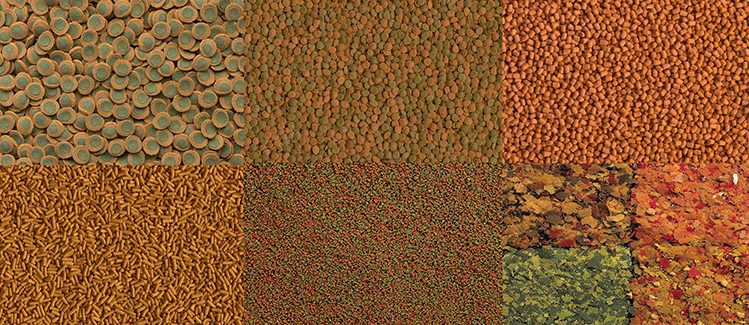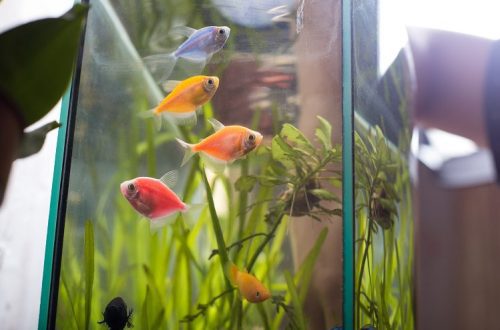
What food to choose for aquarium fish so that everyone is full
An aquarist with 20 years of experience explains how to navigate flakes, chips, pellets and sticks.
It can be difficult for a novice aquarist to find the right fish food. I understand this very well: as soon as you go to a pet store, your eyes run wide from a variety of feeds in the form of flakes, chips, granules, sticks, and even gel. To begin with, it is important to understand that various forms of fish food are not a marketing ploy by manufacturers, but a necessary measure designed to satisfy the natural eating habits of fish.
There are a huge number of types of aquarium fish, and each has its own feeding habits. For example, bettas love to pick up food from the surface of the water. If only bettas live in your aquarium, you only need to buy one food: which stays on the surface or in the upper layer of water for a long time. But if you plan to add catfish to cockerels, feed alone is not enough. You will also need food in tablets: they sink to the bottom, where the catfish can eat them.
Some fish prefer to feed at the surface of the water, others in the middle layers, and still others capture food from the bottom. There is an easy way to figure out which category your fish belongs to. Look at the shape of her mouth!
If the mouth is pointing up, it is more convenient for the fish to take food from the surface of the water.
If the mouth “looks” straight – the fish feeds in the middle layers of the water
If the mouth is pointing down – the fish collects food from the bottom of the aquarium
Taking into account the physiological characteristics of fish and their eating habits, various forms of feed have been developed.
I’ll tell you what types of food can be found on store shelves and what kind of fish they are suitable for:
- Flakes (flakes) are light thin plates that perfectly adhere to the surface of the water and do not sink for a long time. Flake food is best for fish that have an upper mouth. In nature, they feed from the surface of the water: for example, zebrafish, platies, guppies, cuneiformes. This is a general purpose food. Suitable if there are fish of different sizes in the aquarium. The flakes are easily broken and bitten. However, due to their brittleness, the flakes generate more dust than other foods and can pollute the water. To avoid this, it is important to accurately calculate the dose and not overfeed the fish.
- Granules – food in the form of balls, sticks or pellets of the same size. There are floating and sinking options. The former retain buoyancy for a long time and are suitable for fish with an upper mouth. The latter slowly sink to the bottom – ideal for fish with a middle and lower mouth. The granules are less dusty and spoil the water, and the fish swallow them whole. But they have the same size – which means they will only fit if the fish in the aquarium are about the same.
- Chips are dense rounded plates. This is a versatile food that breaks and bites easily. Suitable for fish of all sizes. Some of the plates remain floating, while others slowly sink to the bottom. Chips are suitable for fish with any type of mouth, this is a good option for mixed aquariums. Another important feature of this feed is the production technology. Chips are made without the use of high-temperature treatments, so they retain most of the vitamins, minerals and nutrients unchanged. Of all the dry foods, chips are the most nutritious.
- Tablets and plates are a special form of food intended for bottom dwellers: catfish and loaches. During feeding, catfish often do not get food, as other inhabitants eat much faster. The tablets are large enough that the fish, upper and middle layers cannot swallow them. The food quickly sinks to the bottom, where the catfish eat it. Tablets and plates do not soak for a long time, keep their shape well and do not generate dust. This is important because catfish do not swallow them whole, but bite into small pieces.

Apart from flakes, chips, sticks and granules, I want to mention fish food in the form of a gel – for example, Tetra FreshDelica Bloodworms. It is ideal for targeted feeding and communication with your pet. It works like this: you squeeze a little gel onto the surface of the water – and the fish immediately swims up and eats it. In this way you can feed each fish, looking at it and enjoying communication with it. And this food is suitable for all fish. The gel that was not eaten by the fish immediately sinks slowly to the bottom. While he swims, they feast on fish from the middle layers of the water. And the mouth-watering leftovers at the bottom are happy to eat up the catfish.
If you have several varieties of fish in the aquarium and they need different forms of food, I recommend buying food from the same brand: it’s better for digestion. Professional brands, such as the popular company Tetra, produce a complete range of fish food for all dietary habits, so you won’t have any problems. The main thing is not to change brands and lines unnecessarily: this is stress for the body of the fish.
Take care of your aquarium inhabitants!





